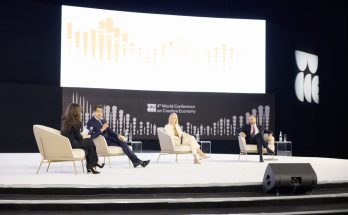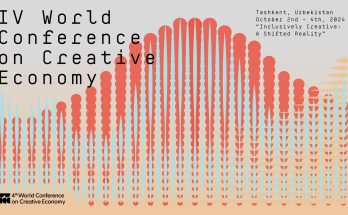 KATHMANDU: The Modi mantra rings loud and clear in Nepal. Talk to anyone in the buzzing bazaars of Kathmandu, the very word Modi evokes smile and respect. He has become synonymous with development and hope for people in Nepal who are yearning for better governance and infrastructure. Trying to live up to soaring expectations in the Himalayan state, Prime Minister Narendra Modi formalised $1 billion soft loan for development projects, gifted a trauma centre to Nepal and unveiled sister-city arrangements between key Hindu and Buddhist pilgrimage hubs in India and Nepal.
KATHMANDU: The Modi mantra rings loud and clear in Nepal. Talk to anyone in the buzzing bazaars of Kathmandu, the very word Modi evokes smile and respect. He has become synonymous with development and hope for people in Nepal who are yearning for better governance and infrastructure. Trying to live up to soaring expectations in the Himalayan state, Prime Minister Narendra Modi formalised $1 billion soft loan for development projects, gifted a trauma centre to Nepal and unveiled sister-city arrangements between key Hindu and Buddhist pilgrimage hubs in India and Nepal.
“If Nepal is not happy, India cannot smile. Nepal’s happiness gives us joy,” Mr Modi said in a brief speech at the inauguration of National Trauma Centre in Kathmandu,, his first engagement after touching down in the Nepali capital on November 25 afternoon.”Nepal has given me so much love that I cannot forget,” said the Indian leader, who charmed the people of Nepal during his maiden to Nepal four months ago and ended a diplomatic hiatus by becoming the first Indian prime minister to visit the Himalayan country in nearly three decades.
 This time round, Mr Modi underscored that if there is a strong “engine of trust and confidence” between India and Nepal, anything is possible, reflecting a sense of optimism about the future trajectory of bilateral relations that was encapsulated in Mr Modi’s wide-ranging talks with his Nepali counterpart Sushil Koirala. Pushing the ties on fast-track, the two sides signed a dozen pacts, that included an agreement for India providing $1 billion Line of Credit for a host of infrastructure projects in the Himalayan state that is navigating its transition to democracy, and a landmark Motor Vehicle Agreement that will boost people-to-people contacts, business and tourism between the two countries.
This time round, Mr Modi underscored that if there is a strong “engine of trust and confidence” between India and Nepal, anything is possible, reflecting a sense of optimism about the future trajectory of bilateral relations that was encapsulated in Mr Modi’s wide-ranging talks with his Nepali counterpart Sushil Koirala. Pushing the ties on fast-track, the two sides signed a dozen pacts, that included an agreement for India providing $1 billion Line of Credit for a host of infrastructure projects in the Himalayan state that is navigating its transition to democracy, and a landmark Motor Vehicle Agreement that will boost people-to-people contacts, business and tourism between the two countries.
“It has not been even 100 days since my last visit to Nepal and the relations between the two countries have reached heights which were not attained in the last 30 years,” said Mr Modi. Pitching for greater connectivity between the two neighbours, Mr Modi jointly flagged off the Delhi-Kathmandu-Delhi bus service. “We hope that the Delhi-Kathmandu buses increase the tourism of Nepal, if possible we want the buses to be Wi-Fi enabled,” the PM said.
On a different track, India signaled an up-scaling in defence ties as the Indian prime minister handed over Dhruv Advance Light Helicopters to Nepal Army at the Army Pavilion, Tundilkhel.
Imparting a fresh energy to cultural diplomacy, the Indian prime minister also unveiled sister city arrangements between Varanasi and Kathmandu, Janakpur and Ayodhya and Lumbini and Bodh Gaya.
India and Nepal enjoy unique and intimate ties, which are rooted in history and manifest in day-to-day existence in a thousand different ways. The facts and figures tell their own story, and evoke a rich tapestry of relations framed by trade and investment, culture and robust people-to-people contacts. Indians and Nepalese bond and merge so effortlessly that they are hardly seen as foreigners in each other’s country. There are six million Nepalese working in India. And there are 600,000 Indians who have made Nepal their home. Nepalese can work in India without a work permit, open bank accounts and own property.
Open border has ensured an uninterrupted flow of flow of people between the two countries. Besides, there are 60 flights per week between the two countries. Twenty per cent of all tourists visiting Nepal are from India, and around 40 per cent of tourist flows to Nepal are through India.
(Manish Chand is Editor-in-Chief of India Writes Network, www.indiawrites.org, a portal and e-journal focused on international affairs and the India Story. He is in Kathmandu to report and analyse the 18th SAARC summit)
Author Profile

- Manish Chand is Founder and Editor-in-Chief of India Writes Network (www.indiawrites.org) and India and World, a pioneering magazine focused on international affairs. He is CEO, Centre for Global India Insights, an India-based think tank focused on global affairs.
Latest entries
 India and the WorldOctober 27, 2025Modi hails the century of India and ASEAN, backs ASEAN centrality
India and the WorldOctober 27, 2025Modi hails the century of India and ASEAN, backs ASEAN centrality India and the WorldOctober 26, 2025Act East: Five reasons why ASEAN summit in Malaysia matters
India and the WorldOctober 26, 2025Act East: Five reasons why ASEAN summit in Malaysia matters India and the WorldOctober 25, 2025Malaysia Summit: India can play a bigger role in ASEAN: Anil Wadhwa
India and the WorldOctober 25, 2025Malaysia Summit: India can play a bigger role in ASEAN: Anil Wadhwa India and the WorldOctober 2, 2025With US frowning, India to host Putin in December
India and the WorldOctober 2, 2025With US frowning, India to host Putin in December







